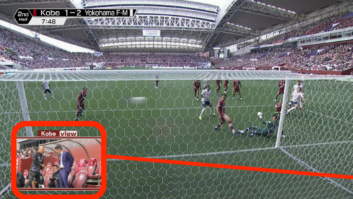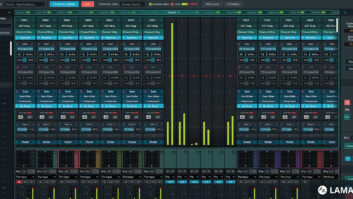The story of compression in live broadcast production is a long, complex and ongoing one. But a new white paper from Sony Group company Nevion, entitled Video Encoding in Live Broadcast Production, outlines some of the key technologies available to broadcasters today and ways to pick the right one for each production need.
Live production invariably involves many video, audio and other signals being transported within and between locations. In a limited and well-defined campus or facility environment – like a broadcast studio – the network is generally able to carry all of the signals required without the need for compression.
But when remote production and contribution are added to the picture, bandwidth rapidly starts to become a major issue. Live production technicians are obliged to strike a workable balance between the number of signals required for the production, and the bandwidth that is actually available to them. It’s at this point that compression (more specifically video compression) enters the workflow, but once again broadcasters will find they have to make critical decisions about the relative importance of compression ratio, maintenance of image quality and latency.
Latency is an especially important consideration in live production. Even minor delays can seriously derail a live broadcast, impacting both on-screen content and coordination between the crew members. The more latency creeps up above a few seconds, the more seriously the production can be disrupted.
So broadcasters need to think very carefully about the compression they use – not least as there is no definitive answer to the question of which technologies should be employed in live production. As Nevion notes in the white paper, “it very much depends on the circumstances, the needs and the priorities of the production.”

That said, there are several elements that, once determined, can point production teams in the right direction. Whilst Adaptive BitRate (VBR) is favoured for streaming applications as it allows the bitrate to be adjusted dynamically in line with network conditions, the predictability of Constant BitRate encoding – which, as its name suggests, yields a consistent and predictable bitrate – is the preferred choice for live production.
Meanwhile, the nature and complexity of the live production in question will help broadcasters make decisions about their preferred compression ratio (reducing bandwidth needs is generally desirable), latency (the lower the better in live production), and quality, as well as hardware and software support, and cost.
The white paper then goes on to profile all of the major compression methods currently in use in live production, including JPEG 2000 (J2K), JPEG XS and the various codecs to have emerged since the more bandwidth-intensive UHD/4K started to be used more widely, including HEVC (H.265).
There is also a look at the approach of splitting UHD/4K images into four identically sized quadrants (quad-split), allowing the video to be transported as four synchronised 3G signals. However, it is suggested that this technique will gradually fade in popularity as more facilities migrate to IP infrastructures and ‘full raster’/‘full frame’ compression and transport with single UHD interfacing becomes the norm.
Responding to the industry’s continually evolving compression needs, Sony and Nevion have developed many powerful encoding/decoding solutions as part of the Networked Live ecosystem, including the Sony CBK-RPU7 remote production unit, the Sony NXL-ME80 gateway, and the Nevion Virtuoso software-defined media node – all of which are profiled in the white paper.
Above all, Nevion underlines the fact that different codecs have different sweet spots, and so the selection of technologies is fundamentally dependent on the specific variables of the production. Fortunately, though, broadcasters now have an abundant array of options available to them, ensuring they can meet the requirements of even the most demanding live production.
To download the Nevion paper for free (it only requires completion of a simple form), please visit https://pro.sony/en_GB/live-production/live-production-insights/nevion-encoding-whitepaper







